
- Home
- Workshops / Tours
- Diary / Blog
- Galleries
- Foreign Trips
- Tasmania 2016
- NE Queensland 2016
- Western Alps 2016
- NE Spain 2016
- Australia's Wet Tropics 2015
- Australia's Top End 2015
- SW Australia 2015
- Switzerland 2015
- Andalucia 2015
- Belize 2015
- Australia 2014
- Switzerland 2014
- Belize 2014
- Bahama Islands 2014
- Switzerland 2013
- Ecuador 2012-2013
- Florida 2011-2012
- Vancouver Island 2011
- Australia 2010
- Peru 2008
- Bulgaria 2007
- Lesvos 2006
- California 2006
- New Zealand 2005
- Extremadura 2005
- Goa, India 2004
- The Gambia 2003
New Zealand
5th November - 4th December 2005
Rotorua
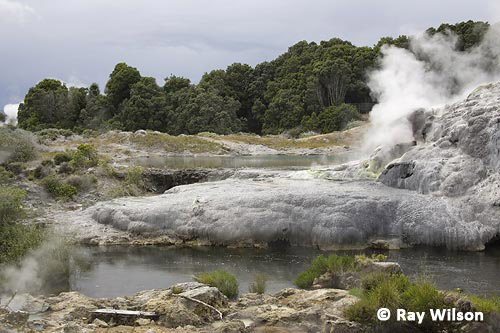
I have always had a fascination for the forces of nature and, since Rotorua is situated in the largest area of geothermal activity in New Zealand, a chance to see the geysers and boiling mud pools of Te Whakarewarewa Thermal Valley was for me unmissable.
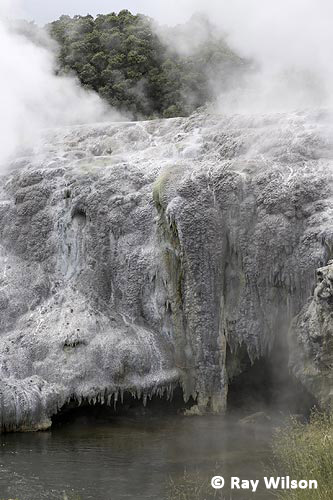
Silica formations at the base of the Pohutu Geyser in Te Whakarewarewa Thermal Valley
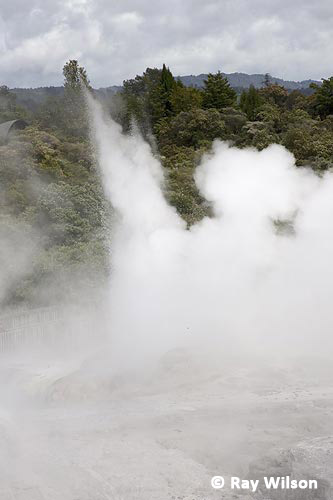
Pohutu Geyser
The largest and most regular geyser in the valley is the Pohutu Geyser. It erupts every hour, shooting boiling water 20m into the air, shrouding the area in clouds of sulphurous steam.
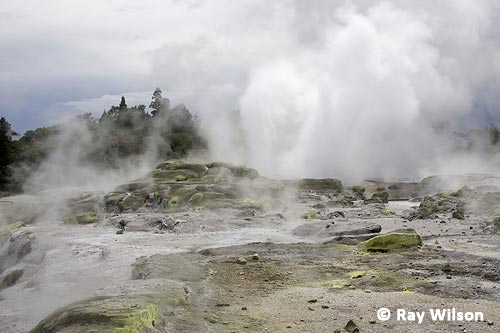
Pohutu Geyser
There are a total of over 500 springs in the valley, ranging in temperature from cold to boiling.
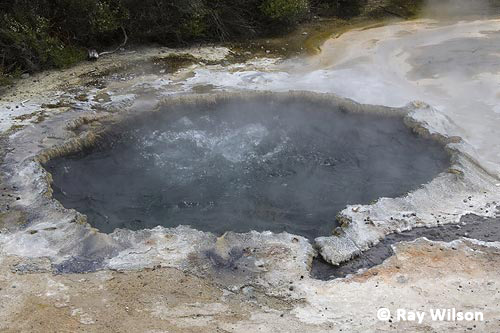
Ngararatuatara Cooking Pool
The above photo shows one of the violently boiling springs. The Maoris, who have lived in the area for many centuries, used such hot pools for cooking their food. This particular pool got its name from the scale-like silica formations at its edges, which to Maori eyes resembled the skin of the Tuatara (a once common, large primative lizard which is now only found on a few predator-free islands).
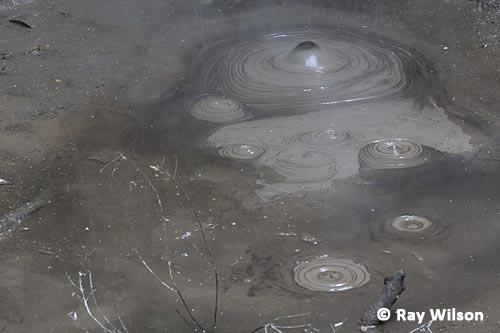
Boiling mud pool
Numerous boiling mud pools are dotted around the valley, producing fascinating patterns as they bubble gently away. Some are not so gentle and spurt boiling mud a metre into the air.
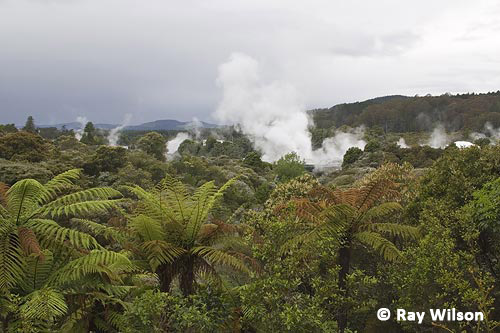
Te Whakarewarewa Thermal Valley
The area around the Polynesian Baths on the shore of Lake Rotorua is a good spot for viewing some of New Zealands endemic waterbirds, such as the New Zealand Grebe.
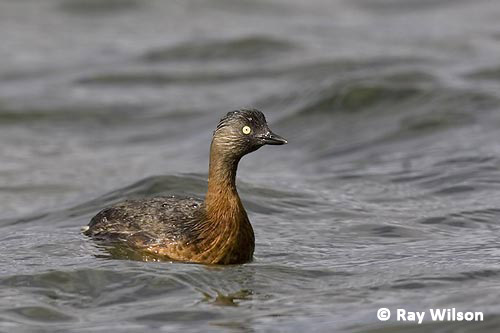
New Zealand Grebe (Poliocephalus rufopectus)
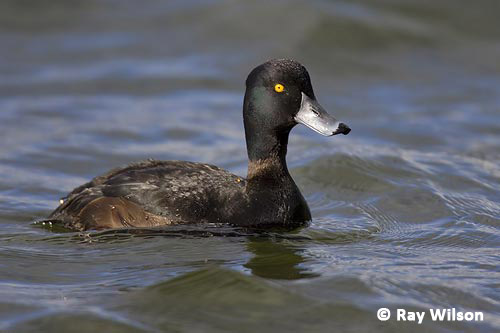
Male New Zealand Scaup (Aythya novaeseelandiae)
The New Zealand Scaup is the most commonly encountered native duck.
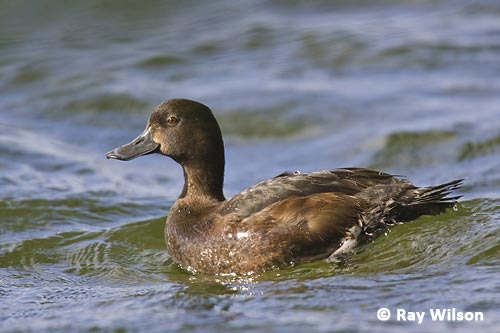
Female New Zealand Scaup (Aythya novaeseelandiae)
About 1km north of the visitor's centre there is a parking area at the mouth of a creek. Here there was another large mixed flock of Knot and Bar-tailed Godwit plus 200 Wrybill (the other resident shorebird at Miranda that I wanted to see). Some of them were less than 8m away! Wrybills are unique among birds in having a laterally curved bill. Looks fairly normal when viewed from the side...
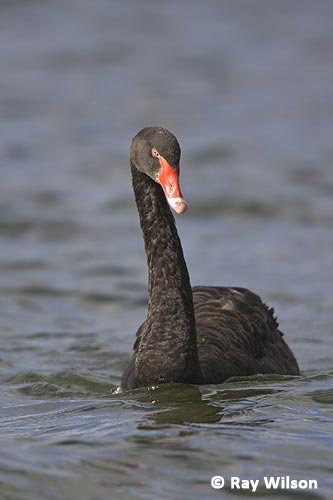
Black Swan (Cygnus atratus)
Other species such as the Black Swan and Mallard have been introduced by European settlers.
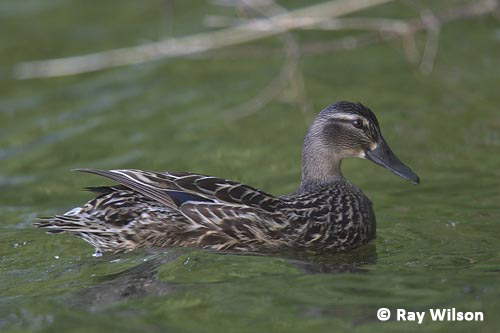
Mallard x Pacific Black Duck hybrid
Like many other parts of the world where Mallards have been introduced, they have interbred extensively with the less aggressive native species, in this case, the Pacific Black Duck (known as the Grey Duck in New Zealand). Pure-bred Pacific Black Ducks are now only found in more remote areas away from the urban and agricultural areas dominated by the Mallard.
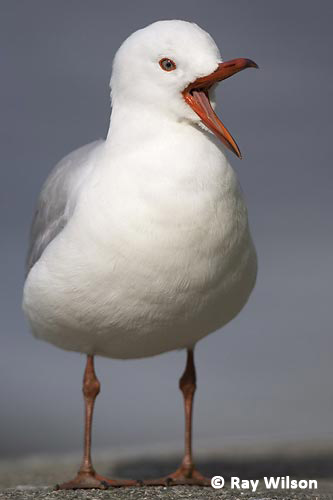 |
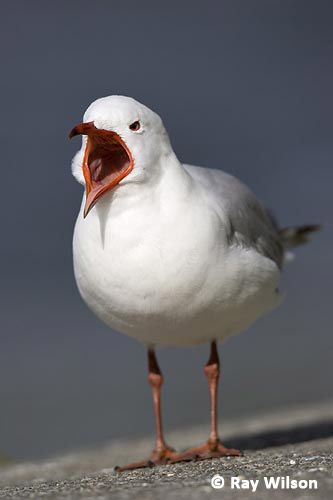 |
Red-billed Gull (Larus scopulinus)
Red-billed Gulls are also easily photographed on the lakeshore.
| Miranda | New Zealand map | Urewera National Park |
Ray Wilson owns the copyright of all images on this site.
They may not be used or copied in any form without prior written permission.
raywilsonphotography@googlemail.com